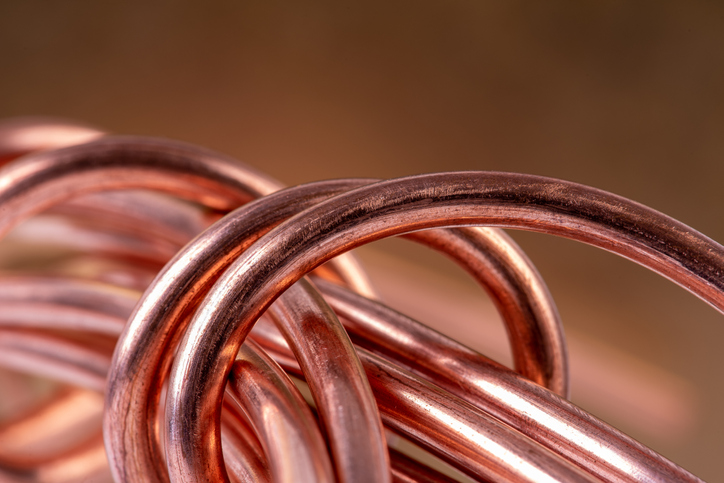Many of the metals used in applications are the combinations of several different types of materials. The reason for this is quite simple. Many pure metals have the unique properties we need in certain types of applications. Such as in the case of copper, this metal offers excellent corrosion resistance in saltwater environments. It also has great electrical and thermal conductivity, as it is often used in electronics and electrical cabling. Other characteristics of copper include its malleability, ductility and softness.
However, pure metals by themselves can have negative properties which will ruin the application. In the case with copper, this metal is weak. While it can be strengthened using work hardening techniques, another way to make it stronger is to add in other metals such as iron.
Adding Iron into Copper
Like copper, iron is also malleable and ductile. It also has good conductivity and tensile strength as it can be stretched without breaking. However, iron is corrosive, as it oxidizes when in the presence of water and oxygen to form rust.
There are times when iron will be added into copper alloys to provide positive benefits. Some of the main benefits to adding iron into copper alloys is to provide increased tensile strength and corrosion resistance without impacting the conductivity that the copper alloys already possess. Types of copper alloys that may have iron added include:
Copper-Iron Alloys: Copper-iron (CuFe) master alloys offer high tensile strength, corrosion resistance and high thermal conductivity as well high electrical conductivity. This master alloy is used as a grain refiner when added into other copper alloys such as aluminum bronze and brass alloys. It typically helps to improve the mechanical properties of low alloyed coppers.
Copper-Nickel Alloys: When introduced into copper-nickel alloys, the iron can help improve the corrosion resistance and strength of the alloy. The alloy can withstand stress corrosion cracking that can occur when used in applications within moist air and steam environments, making it ideal in marine applications. Copper-nickel is commonly used to make electrical products, electronic products and marine products.
Aluminum Bronzes: This copper alloy has roughly 6% of iron added. The iron provides strength and wear resistance. This type of alloy will be typically used in marine environments and applications.
High Copper Alloys: High copper alloys are commonly used for electrical transmission applications. While they already contain a fair amount of conductivity, there may be a certain specific electrical conductivity that is required for the application. Adding other elements such as iron can change the percentage of the conductivity to allow it to meet the ratio that is desired.
Low copper alloys can become high copper alloys when iron and other metals are added. They will have superior strength while having a conductivity that could range between 75% up to 90%.
When considering whether to add iron into copper alloys for applications, you need to understand the types of properties that you want the copper alloy to have, what benefits that the iron will provide, and if there will be any negative impacts to the application. Here at Belmont Metals, we provide copper-based alloys and copper master alloys in a range of compositions. Reach out to our technical team to learn more.

